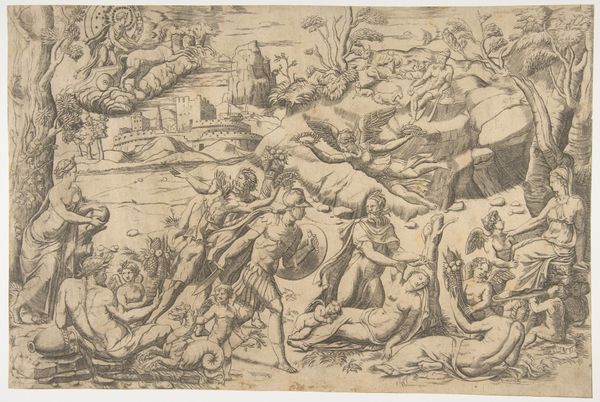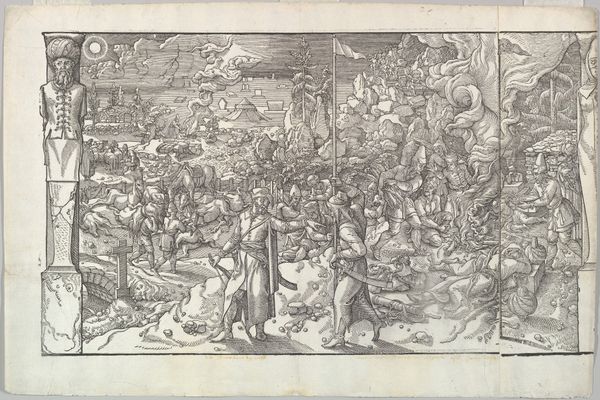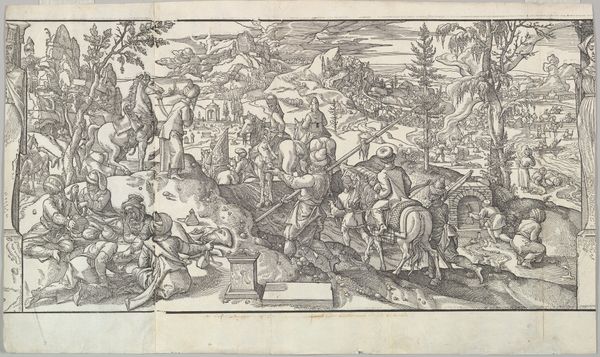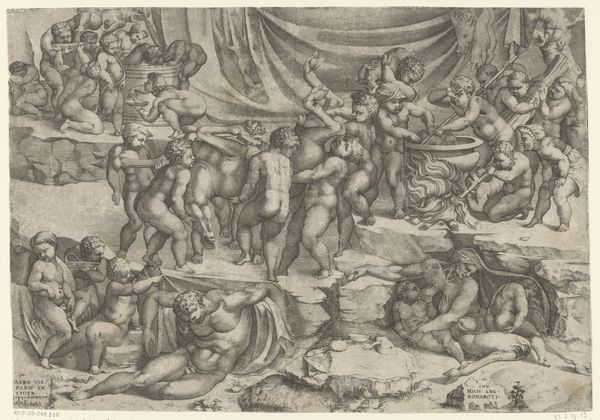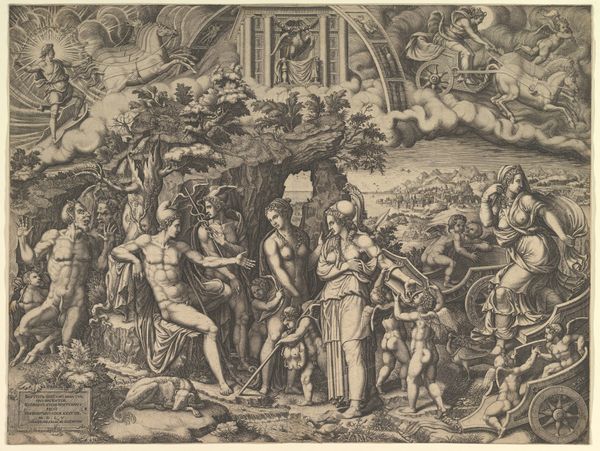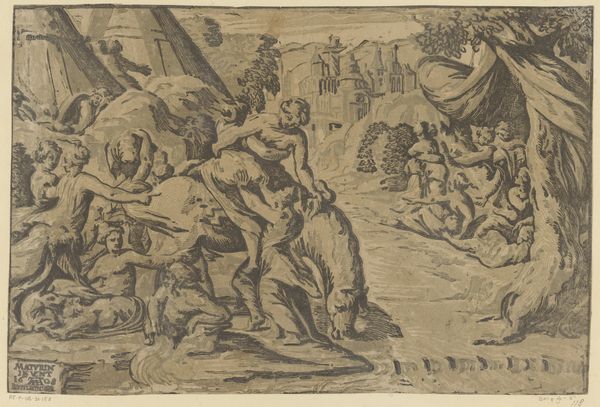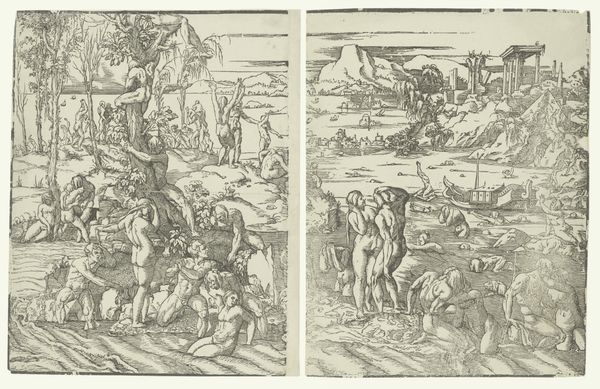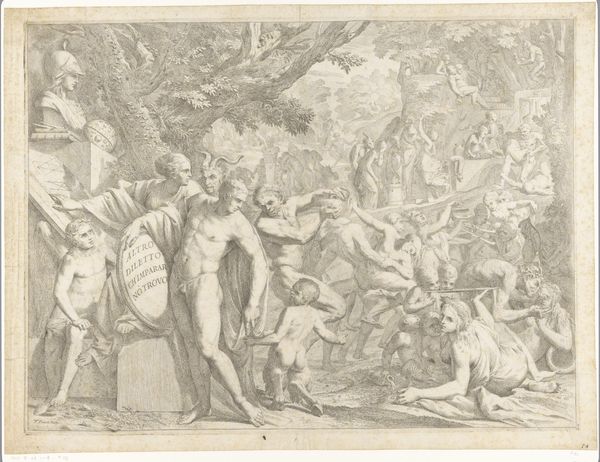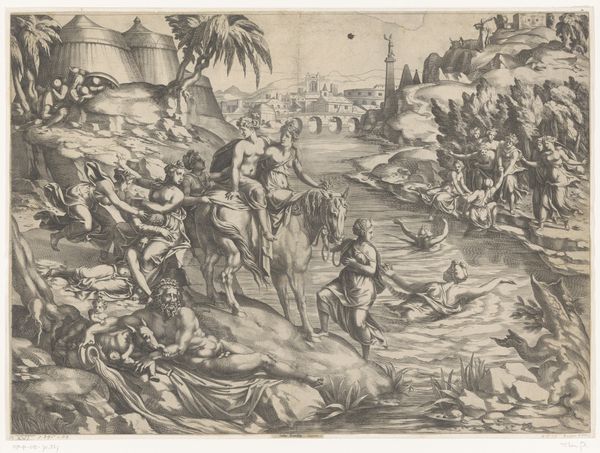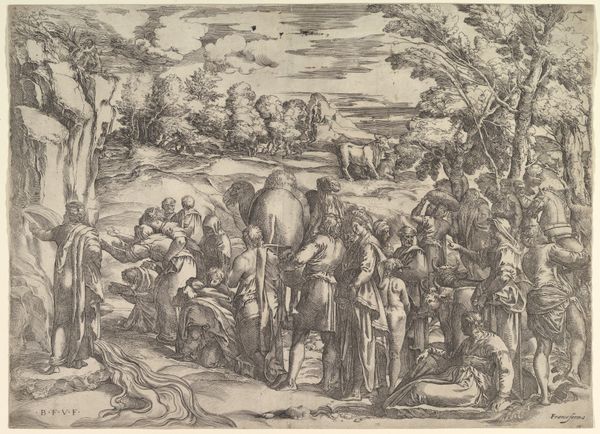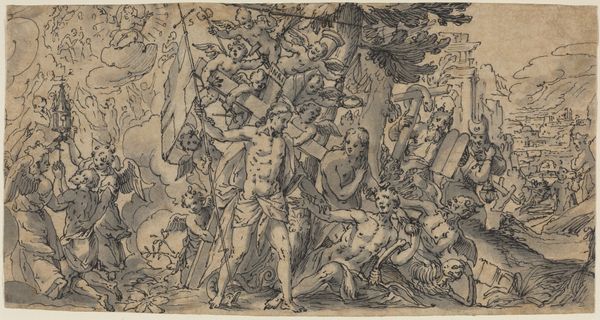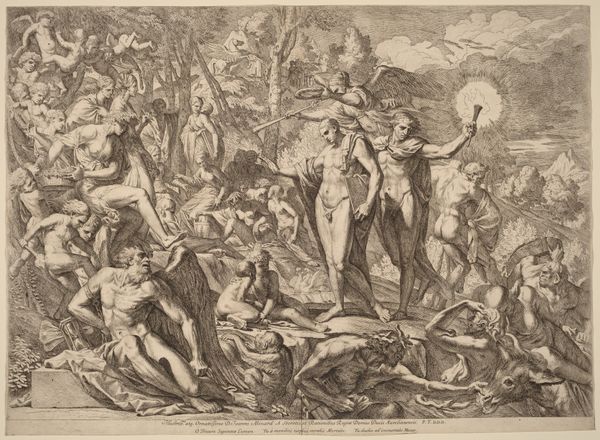
drawing, print, ink, engraving
#
drawing
#
ink drawing
#
narrative-art
#
ink painting
# print
#
pen sketch
#
figuration
#
ink
#
pen work
#
history-painting
#
italian-renaissance
#
engraving
Dimensions: height 800 mm, width 1200 mm
Copyright: Rijks Museum: Open Domain
Editor: So, here we have "The Sacrifice of Isaac" by Ugo da Carpi, dating roughly from 1515 to 1549. It's an ink engraving. There's something incredibly stark about it, maybe due to the limited color palette. What strikes you when you look at this piece? Curator: I see a clear commentary on labor and its division within early 16th-century printmaking. Da Carpi, though credited, likely relied on workshops for the actual production. Consider the social context: printmaking was a burgeoning industry, transforming artistic creation into a commercial venture. How does the narrative of sacrifice itself mirror this? Abraham's willingness to offer his son reflects, perhaps, the artist's submission to the demands of the market. Editor: That’s an interesting perspective, seeing the story as a reflection of the artist's role in the market. So, you’re focusing less on the religious significance and more on the production and consumption aspects? Curator: Precisely. Let’s examine the materials. Ink, paper, the printing press – these were the tools that democratized art but also transformed the artist into a manufacturer. Does the relatively simple, stark nature of an ink print speak to a particular social class of consumers during the Italian Renaissance? Consider the process; it involved various skilled artisans, each contributing to the final product. The woodcutter, the printer… how are their 'sacrifices' represented, or erased, within the final product? Editor: I hadn't thought about it in terms of artistic labor before. So, by viewing this through a materialist lens, you're suggesting that we can understand the socio-economic conditions of the time, as embedded within the artistic process itself? Curator: Absolutely. And perhaps question the conventional boundaries between 'high art' and what we might consider 'craft'. By foregrounding materiality, we gain insight into both the aesthetic qualities of this engraving and also the modes of its production and dissemination within society. Editor: That gives me a completely different appreciation for the work! I hadn't thought about the social dynamics embedded in the printmaking process itself. Curator: Exactly, analyzing the labor helps unearth hidden meanings.
Comments
rijksmuseum about 2 years ago
⋮
Leaving his donkey and servants behind, Abraham sets out to sacrifice his son Isaac. An angel in the landscape at the upper right intervenes at the last moment. The Old Testament story is seen as a prefiguration of Christ’s sacrifice. Just as Christ bore His cross, young Isaac is bowed down under the weight of a bundle of wood. The design for this enormous woodcut is considered one of Titian’s earliest works.
Join the conversation
Join millions of artists and users on Artera today and experience the ultimate creative platform.
